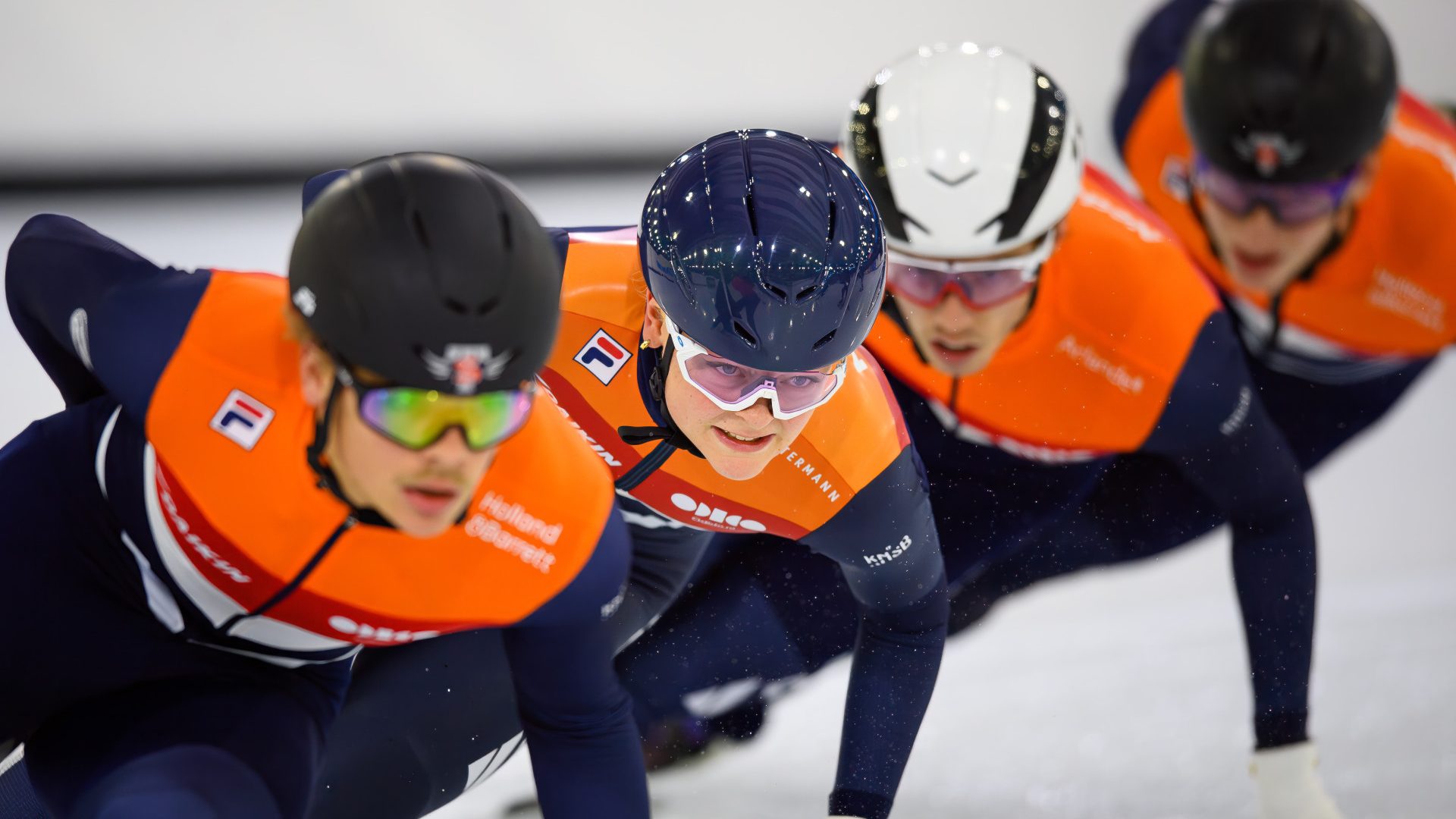Short Track is usually run on an ice hockey rink, where oval laps of 111.12 meters are set. The distances at the World Short Track Championships are 500, 1000, 1500 and 3000 meters individually for both men and women. There will also be 2000 meter relay mixed (mixed relay), 3000 meter relay for the women (women’s relay) and 5000 meter relay for the men (men’s relay). At each distance several rounds must be run.
500 meters: 4,5 rounds.
1000 meters: 9 rounds.
1500 meters: 13,5 rounds.
2000 meters: 18 rounds (mixed relay)
3000 meters: 27 rounds (super finales and relay women)
5000 meters: 45 rounds (relay men)
The Nederlandse Loterij ISU World Short Track Championships 2024 will run through a knockdown system at each distance. There are preliminaries, quarter-finals and semi-finals. Usually the two fastest shorttrackers advance to the next round, but time-fastest riders or disadvantaged riders due to another rider’s infraction are sometimes added.
Each series is divided into several rounds, also called heats. Lots are drawn to determine which riders ride in which heat. Usually four to six heats are run. This depends on the number of participants. A heat usually has four to eight shorttrackers. From the semi-finals, short trackers advance to Final A and Final B. In Final A, the short trackers compete for places 1 to 4 and in Final B for places 5 to 8.
The relay races involves multiple teams of three or four Short Trackers riding laps and alternating by pushing each other. This ensures that speed is passed to each other. Most shorttrackers ride 1.5 to 2 laps and then alternate. When there are three laps to go, a shot sounds. Only one more change is allowed.
If no visible change is made or change is made in the last two laps, the team will be disqualified. If a rider has fallen, that rider may be relieved by hand relief, including in the last two laps.
Jury & Rules
There is one main referee with two assistant referees and a video referee or four assistant referees. After each race, the main referee assesses the race by means of a video-replay system. The main referee can use the system to judge the actions during the race. When a skater consciously obstructs or blocks another skater, that skater can be punished with a penalty. This skater will be disqualified. A skater in a promising position, who is obstruct or blocks by another skater, can proceed to the next round through an advancement.
Per heat is one false start allowed. At every false start after the first one, the skater will get a penalty and will be disqualified. If there is a crash in the first turn, the referee can decide to restart the race. The referee can also stop the race at any time. This can happen, for example, if someone falls and stays in a dangerous place. The race can also be restarted.
When a skater falls, the person may get up again and continue the race, but at the outside of the track, so as not to bother other skaters.
History of short track
To make skating attractive to a wider audience, an accessible form of long track speed skating was developed; short track. This made organising the sport easier, as it is a smaller rink, but it also made it easy for spectators to follow the sport.
The sport only started to spread internationally in the 1970s, as the first official shorttrack championships were in 1978 and took place is Solihull, UK. Since then, the popularity of the sport has started to grow. Since 1992, for instance, the sport has become a regular part of the Olympic skating programme.
Still, shorttrack is growing nationally and internationally, with more and more different countries and participants competing to cross the finish line first. The challenge through the turns and strategy makes the sport spectacular.


